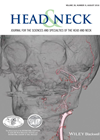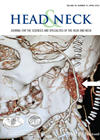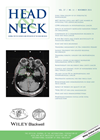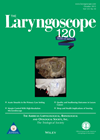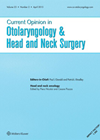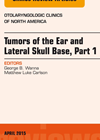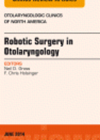
Journal Reviews
Contemporary UK experience of oropharyngeal transoral laser microsurgery
It is well recognised that the current emergence of HPV-positive oropharyngeal squamous cell carcinoma (OPSCC) as a distinct disease entity requires a fresh look at standard treatment modalities that are based on chemoradiotherapy for stage III/IVa OPSCC. The Newcastle experience...
Best timing for post-treatment PET-CT scans in head and neck cancer
Unfortunately we know that the recurrence rate for head and neck cancer can be high, up to 30-50% in some series. These recurrences tend to occur within the first two years following treatment. Optimal surveillance strategies to detect recurrences early...
Risk factors for pharyngocutaneous fistula after laryngectomy
Pharyngocutaneous or salivary fistula is a feared complication following laryngectomy, causing significant morbidity, prolonged hospital inpatient stay / cost and mortality. Previous radiotherapy / chemoradiotherapy is a well recognised risk factor and leads many surgeons to recommend onlay pectoralis major...
Margin control using optical techniques in head and neck surgery
Emerging optical techniques such as high-resolution microendoscopy (HRME) are currently being examined for their reliability in discriminating benign from neoplastic epithelium. These techniques may offer the potential to detect the margin of an upper aerodigestive tract tumour in a non-invasive...
Intermediate risk factors SCC tongue
This retrospective review from Japan assessed 89 patients who underwent surgery for squamous cell carcinoma of the tongue, specifically they reviewed the evidence of perineural and vascular invasion (27.0% and 23.6%). Their results suggest, not unsurprisingly, that perineural and vascular...
No difference upper or lower lip
This is a retrospective review from the Netherlands over a 20-year period to 2009 of squamous cell carcinoma (SCC) of the lip. In total, 979 cases of the lower lip were identified and 126 of the upper lip, with men...
Management of the neck in maxillary sinus carcinomas
Primary malignant tumours of the sinonasal tract account for less than 10% of head and neck cancers, of which the maxilla is the second most common subsite and squamous cell carcinoma (SCC) is the most prevalent histological type. Maxillary SCCs...
When ears go bad
Whilst rare, squamous cell carcinoma is the commonest primary malignancy of the temporal bone and is discussed in this review article. This tumour frequently presents with otalgia, ottorhoea and hearing loss; less commonly, with facial palsy or parotid mass. Investigations...
In the future there will be robots
This edition of review articles encompasses the emerging techniques of robotic surgery, written by international experts from centres that are increasing their repertoire of procedures. The treatment of oropharyngeal cancer is challenging irrespective of modality, as oncological and functional outcomes...

